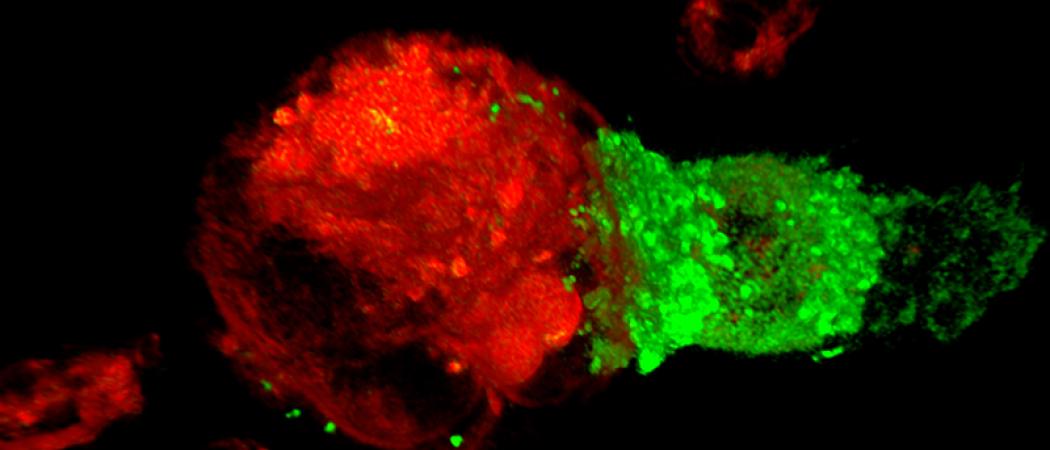
Image credit: Ned Kirkpatrick and colleagues
Tumors are masters of deception. Cancer cells destroy healthy tissue, but they mask their activities and evade the human body’s natural defenses. The immune system doesn’t see through the trickery.
Novartis drug hunters and oncology researchers worldwide are finding ways to outsmart tumors. New cancer immunotherapies are achieving substantial successes for many patients, but there’s room for a wider reach.
Novartis scientists are investigating several approaches to increase the immune response to cancer, including educating immune cells, activating them, and priming the tumor for an immune response. In addition, they are exploring immunotherapy matchmaking by looking for clues inside a tumor that could help them pair the right immunotherapy with the right patient.
Immune education
Certain cells in the immune system are lifelong students. They can be taught to attack unwanted invaders, including cancer cells. One approach Novartis scientists are taking to immune education involves the use of chimeric antigen receptor T-cells (CAR-T). This approach trains a patient’s own immune cells – special cells called T-cells that act as the soldiers of the immune system – to identify and attack cancer cells. Training entails giving T-cells the instructions they need to make a sensor that detects an enemy flag on cancer cells. Here the CAR-T cells (sensors shown in green) have recognized a cancer cell (red) and launched an attack.
Immune activation
Like a slick con artist, cancer knows how to fool the immune system into thinking that there are no diseased cells to attack. The signals a tumor uses to play its tricks are a normal part of the immune system. They can alter immune behavior in multiple ways, such as by masking tumor cells or by deactivating immune cells. Novartis researchers are exploring a variety of ways to strip away these deceptive molecular signals and activate immune cells in the tumor. For example, one signal exploited by tumors is called a checkpoint, a set of brakes that normally keeps immune cells from damaging healthy cells. Tumors exploit checkpoint signals to keep the immune system’s foot soldiers, T-cells, from attacking cancer cells. Here, a checkpoint inhibitor has lifted the brakes and activated T-cells (blue) to attack and destroy a cancer cell (pink).
Primed microenvironment
Beautiful, isn’t it? Looks can be deceiving. This is a tumor. There’s so much more going on besides the growth of cancer cells. Researchers recognize that the parts of a tumor that surround cancer cells, the tumor microenvironment, may be as important to consider as the cancer cells themselves. Novartis scientists are searching for ways to prime the tumor microenvironment to make immunotherapies more effective.
Immunotherapy matchmaking
Why do some patients respond to a therapy when other seemingly similar patients do not? It’s a mystery, but Novartis scientists think that an answer might lie in the details of the tumor itself. For instance, the distribution and abundance of immune cells in a tumor could hold clues about how well a patient might do on immunotherapy. To explore this possibility, Novartis scientists have turned to artificial intelligence (AI) to see if computer programs can find clues in images of cancer pathology slides. As a first step, Novartis pathologists are working with tech startup PathAI to train an AI platform to recognize cell types on pathology slides. Here the AI has identified tumor cells (red), immune cells (green, yellow), and other cells (black, purple).





 A unique international forum for public research organisations and companies to connect their external engagement with strategic interests around their R&D system.
A unique international forum for public research organisations and companies to connect their external engagement with strategic interests around their R&D system.